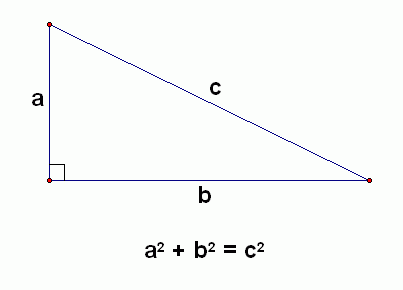Have you ever heard individuals say that they have a tendency to be to a greater degree a right-mind or left-cerebrum scholar? From books to TV programs, you've likely heard the expression said various times or maybe you've even taken an online test to figure out which sort best depicts you. Given the prevalence of the thought of "right brained" and "left brained" scholars, it may shock you discover that this thought is only one of numerous myths about the cerebrum.
What Is Left Brain - Right Brain Theory?
As per the hypothesis of left-cerebrum or right-mind strength, each one side of the mind controls distinctive sorts of considering. Furthermore, individuals are said to incline toward one kind of thoroughly considering the other. For instance, an individual who is "left-brained" is regularly said to be more consistent, logical, and destination, while an individual who is "correct brained" is said to be more natural, attentive, and subjective.
In brain research, the hypothesis is focused around what is known as the lateralization of cerebrum capacity. So does one side of the cerebrum truly control particular capacities? Are individuals either left-brained or right-brained? In the same way as other famous brain research myths, this one developed out of perceptions about the human mind that were then significantly contorted and misrepresented.
The right mind left cerebrum hypothesis began in the work of Roger W. Sperry, who was recompensed the Nobel Prize in 1981. While examining the impacts of epilepsy, Sperry found that cutting the corpus collosum (the structure that interfaces the two halves of the globe of the mind) could diminish or kill seizures.
On the other hand, these patients likewise accomplished different side effects after the correspondence pathway between the two sides of the cerebrum was cut. Case in point, numerous part mind patients ended up not able to name protests that were prepared by the right half of the cerebrum, however had the capacity name questions that were handled by the left-half of the cerebrum. In light of this data, Sperry proposed that dialect was controlled by the left-half of the mind.
Later research has demonstrated that the cerebrum is not almost as dichotomous as once thought. Case in point, late research has demonstrated that capabilities in subjects, for example, math are really strongest when both parts of the mind cooperate. Today, neuroscientists realize that the two sides of the mind cooperate to perform a wide mixed bag of errands and that the two halves of the globe convey through the corpus collosum.
"Regardless of how lateralized the mind can get, however, the two sides still cooperate," science essayist Carl Zimmer clarified in an article for Discover magazine. "The pop brain research idea of a left mind and a right cerebrum doesn't catch their close living up to expectations relationship. The left side of the equator spends significant time in choosing the sounds that structure words and working out the grammar of the words, for instance, however it doesn't have a syndication on dialect preparing. The right half of the globe is really more delicate to the passionate peculiarities of dialect, tuning into the moderate rhythms of discourse that convey sound and anxiety."
In one study via analysts at the University of Utah, more 1,000 members had their brains examined so as to figure out whether they favored utilizing one side over the other. The study uncovered that while action was now and again higher in certain paramount districts, both sides of the mind were basically equivalent in their movement generally speaking.
"It's totally genuine that some cerebrum capacities happen in one or the opposite side of the mind. Dialect has a tendency to be on the left, consideration all the more on the right. In any case individuals don't have a tendency to have a stronger left- or right-sided mind system. It is by all accounts decided more association by association," clarified the study's lead creator Dr. Jeff Anderson.
While the thought of right mind/ left cerebrum masterminds has been exposed, its prevalence endures. So what precisely did this hypothesis recommend?
The Right Brain
As per the left-cerebrum, right-mind strength hypothesis, the right half of the mind is best at expressive and inventive errands. A percentage of the capacities that are prevalently connected with the right half of the mind include:
- Perceiving appearances
- Communicating feelings
- Music
- Perusing feelings
- Shade
- Pictures
- Instinct
- Innovativeness
The Left Brain
The left-half of the mind is thought to be adroit at errands that include rationale, dialect and scientific considering. The left-mind is regularly portrayed as being better at:
- Dialect
- Rationale
- Basic considering
- Numbers
- Thinking
So Why Do People Still Talk About Right-Brain, Left-Brain Theory?
Analysts have exhibited that right-cerebrum/left-mind hypothesis is a myth, yet its prominence perseveres. Why? Tragically numerous individuals are likely uninformed that the hypothesis is old fashioned. Today, understudies may keep on looking into the hypothesis as a state of chronicled premium - to see how our plans regarding how the cerebrum functions have advanced and changed about whether as analysts have adapted all the more about how the mind works.
While over-summed up and exaggerated by prevalent brain science and self improvement writings, understanding your qualities and shortcomings in specific ranges can help you create better approaches to learn and study. Case in point, understudies who have a troublesome time after verbal directions (regularly referred to as a right-cerebrum trademark) may profit from recording headings and creating better authoritative aptitudes. The critical thing to recollect on the off chance that you take one of the a lot of people left cerebrum/right mind tests that you will probably experience online is that they are completely for the sake of entertainment and you shouldn't put much stock in your results.

















